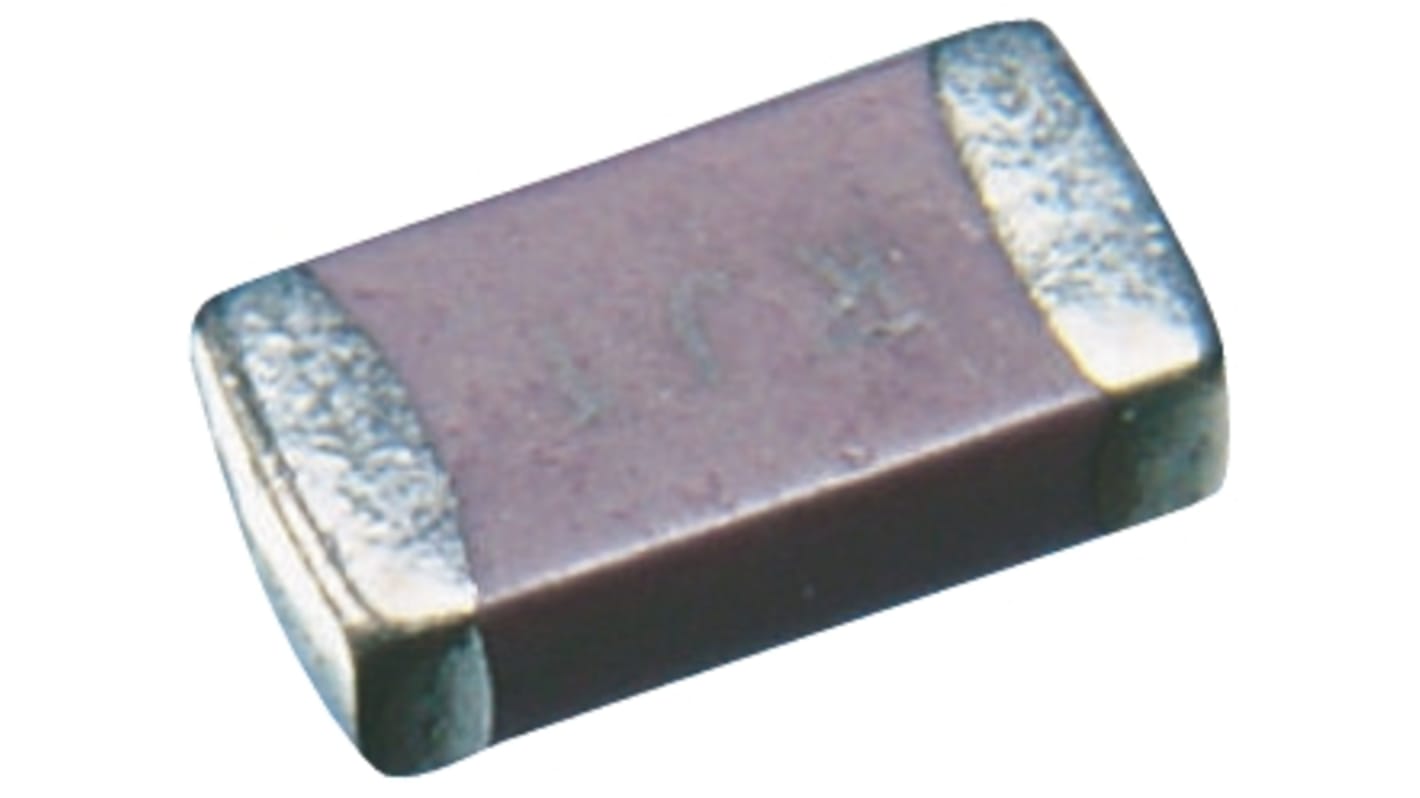KEMET 22nF Multilayer Ceramic Capacitor MLCC, 200V dc V, ±5% , SMD
- RS Stock No.:
- 835-4074
- Mfr. Part No.:
- C1206X223J2GACAUTO
- Brand:
- KEMET

Unavailable
RS will no longer stock this product.
- RS Stock No.:
- 835-4074
- Mfr. Part No.:
- C1206X223J2GACAUTO
- Brand:
- KEMET
Specifications
Technical Reference
Legislation and Compliance
Product Details
Find similar products by selecting one or more attributes.
Select all | Attribute | Value |
|---|---|---|
| Brand | KEMET | |
| Capacitance | 22nF | |
| Voltage | 200V dc | |
| Package/Case | 1206 (3216M) | |
| Mounting Type | Surface Mount | |
| Dielectric | C0G | |
| Tolerance | ±5% | |
| Dimensions | 3.3 x 1.6 x 1.6mm | |
| Length | 3.3mm | |
| Depth | 1.6mm | |
| Height | 1.6mm | |
| Series | X FT-CAP | |
| Maximum Operating Temperature | +125°C | |
| Minimum Operating Temperature | -55°C | |
Select all | ||
|---|---|---|
Brand KEMET | ||
Capacitance 22nF | ||
Voltage 200V dc | ||
Package/Case 1206 (3216M) | ||
Mounting Type Surface Mount | ||
Dielectric C0G | ||
Tolerance ±5% | ||
Dimensions 3.3 x 1.6 x 1.6mm | ||
Length 3.3mm | ||
Depth 1.6mm | ||
Height 1.6mm | ||
Series X FT-CAP | ||
Maximum Operating Temperature +125°C | ||
Minimum Operating Temperature -55°C | ||
Kemet 1206 Automotive Grade FT-CAP SMT MLCC Ceramic Capacitors
1206 size AEC–Q200 automotive grade FT-CAP SMT MLCC ceramic capacitors that offer flex performance of up to 5mm through the use of a flexible termination system that minimizes the transfer of board flex stress to the component body. These FT-CAP MLCC SMT ceramic capacitors have pliable and conductive silver epoxy between the base metal and nickel barrier layers of the termination system which inhibits the transfer of board stress to the ceramic body reducing the occurence of flex cracks which can result in low IR or short circuit failiures. In addtion these automotive grade FT-CAP MLCC cermamic capacitors have a wide operating temperature range of -55 to + 125°C , low ESR and ESL, high thermal stability and high ripple current capability. Typical applications for these FT-CAP MLCC cermamic capacitors include critical timing, tuning, circuits requiring low loss, circuits with pulse, high current, decoupling, bypass, filtering, transient voltage suppression and blocking and energy storage in critical and safety relevant circuits without (integrated) current limitation.
1206 Range
C0G (NP0) is the most popular formulation of the "temperature-compensating", EIA Class I ceramic materials
X7R formulations are called "temperature stable" ceramics and fall into EIA Class II materials
Y5V formulations are for general-purpose use in a limited temperature range.These characteristics make Y5V ideal for decoupling applications
X7R formulations are called "temperature stable" ceramics and fall into EIA Class II materials
Y5V formulations are for general-purpose use in a limited temperature range.These characteristics make Y5V ideal for decoupling applications
